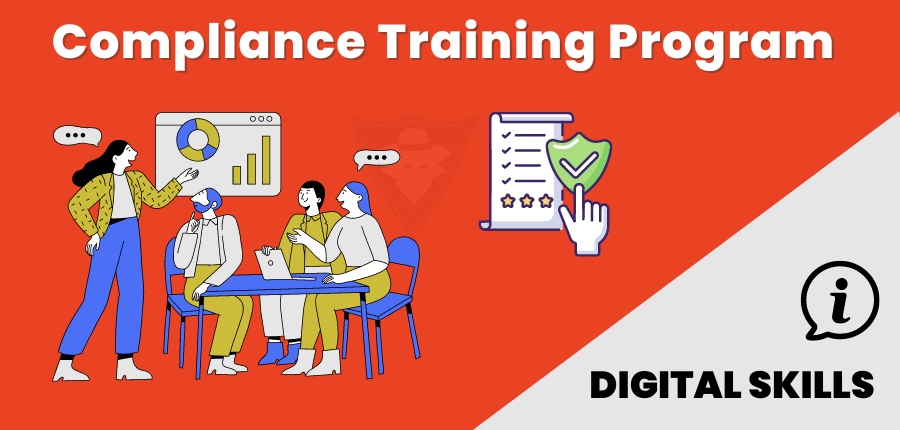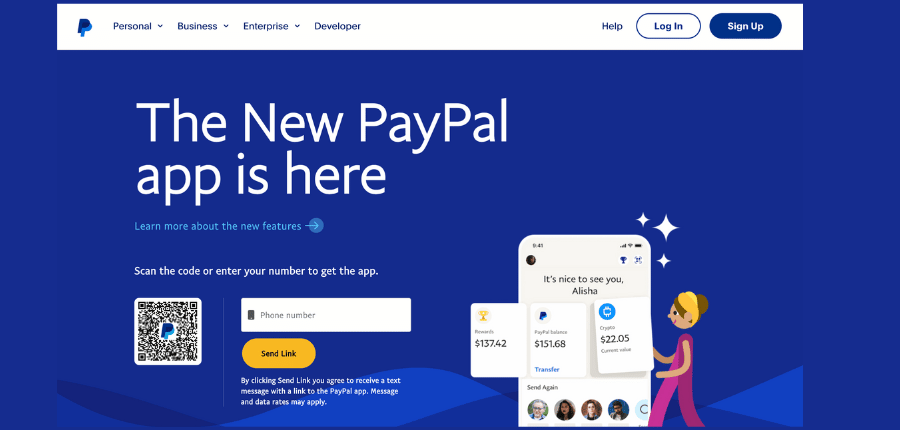Creation Of A Compliance Training Program: Best Practices Compliance training is a mandatory pillar of every organization’s backbone that often remains ignored. But with increasing regulations on the market, putting in place successful compliance training is not just about...

Creation Of A Compliance Training Program: Best Practices
Compliance training is a mandatory pillar of every organization’s backbone that often remains ignored.
But with increasing regulations on the market, putting in place successful compliance training is not just about ticking off boxes but rather a necessary strategy.
It entails providing the direction, and limits within the framework of work for each employee.
Failure to comply with the standards has far-reaching implications since it may attract legal repercussions as well as tarnish an organization’s image.
An appropriately developed program shields the corporation as well as encourages an organizational culture built upon integrity and ethics.
This blog post will discuss the ‘best practices’ and tips for creating a successful compliance training program to make it an enlightening experience and not a tick-box exercise.
Understanding Compliance Requirements

Successful compliance training depends on understanding of the compliance requirements. Initially, organizations should understand the specific laws, regulations, and standards, which govern the particular industry and business they undertake.
It entails carrying out an in-depth examination of the laws that are applicable on the local level, nationwide, and internationally for the organization. Knowledge of the ramifications of non-compliance should be understood, including penalties, fines, and even loss of license to operate.
Understanding what is required will also be beneficial in designing an all-encompassing, tailored, and relevant initiative. These requirements will then be translated into simple, comprehensible instructions for the employees.
Such could entail translating intricate legal terminology into simple, direct orders. Remember that, compliance training is for a purpose beyond, that is, avoidance of penalties and meeting regulatory requirements; it promotes a culture of ethical behaviors and responsible decision-making.
Therefore, the requirements must be presented as if they are directly linked to the employee’s daily work and the organization’s larger mission and values. This goes a long way to ensure that the training becomes interesting and effective.
Regulatory Landscape: Overview of Key Regulations
Regulations in the business world come in many forms and apply to various aspects of an organization’s operations.
Understanding these regulations is crucial to achieving compliance and promoting ethical business practices. A handful of key regulations that most businesses should be aware of include:
Data Protection and Privacy Regulations: These aim to protect individuals’ personal information and dictate how businesses handle such information. Examples include the General Data Protection Regulation (GDPR) in Europe and the California Consumer Privacy Act (CCPA) in the United States. Occupational Health and Safety Regulations: These ensure safe and healthy working conditions for working men and women by setting and enforcing standards and by providing training, outreach, education, and assistance. An example is the Occupational Safety and Health Act (OSHA) in the United States. Anti-corruption and Bribery Regulations: These prohibit businesses from engaging in unethical practices like bribery to gain an unfair advantage. The Foreign Corrupt Practices Act (FCPA) in the US and UK Bribery Act are examples of such regulations. Industry-specific compliance considerations: Depending on the industry, there may be specific regulations that organizations must comply with. For instance, healthcare providers must adhere to the Health Insurance Portability and Accountability Act (HIPAA), while financial institutions must follow the Sarbanes-Oxley Act (SOX). Labor Laws: These govern the relationship between employers, employees, and trade unions. They cover areas such as employment contracts, wages, working hours, and workplace conditions. Some examples include the Fair Labor Standards Act (FLSA) in the United States and the Employment Rights Act in the UK.The regulatory environment isn’t static; it shifts and expands in response to societal changes, technological advancements, and economic conditions.
Therefore, organizations must constantly monitor and adapt to these changes to remain compliant. This involves staying abreast of new and updated regulations, training employees accordingly, and adjusting business practices as needed.
Components of Effective Compliance Training Program
An effective compliance training program consists of several integral components that contribute to its overall success.
1. Clear Objectives
Clear objectives provide a roadmap for the training program, outlining what the organization hopes to achieve through the training.
They can be related to improving knowledge about specific laws and regulations, fostering an ethical workplace environment, or increasing awareness of company policies.
2. Relevant Content
Therefore, the content of the training program should focus on the employee’s role and responsibility in the organization.
This will cover details that encompass things like pertinent industry regulations, possible pitfalls and challenges as well as standards for maintaining compliance.
3. Interactive Engagement
Quizzes, case studies, and group discussions among others constitute interactive engagements that can make learners engaged in the learning process by involving them with the materials.
They would also create support structures that could reinforce the learning content materials, and in turn, make it easy for them to use their newly acquired knowledge in their respective jobs.
4. Assessment and Feedback
This entails conducting assessments and feedback on the program’s effectiveness. Assessment will enable assessing the extent of knowledge acquired by employees about the learning materials and feedback will provide useful information on how the training program can be enhanced.
5. Continuous Improvement
This entails regularly evaluating and revising the training to keep it relevant and efficient. This process includes feedback, changes in training methods, and revising the content where needed.
Best Practices for Compliance Training
Some best practices for compliance training include:
Customized Content Development
Tailored to Regulations: Create content that specifically addresses relevant regulatory requirements, considering the industry and geographic location. Role-Specific Modules: Develop training modules that cater to different employee roles, ensuring targeted and pertinent information.Interactive Learning Modules
Scenario-Based Learning: Engage learners through real-life scenarios, helping them apply theoretical knowledge to practical situations. Gamification Elements: Incorporate game-like features to enhance engagement and make the learning experience more enjoyable.Multimedia Integration
Videos and Simulations: Utilize multimedia elements like videos and simulations to provide a dynamic and immersive learning experience. Infographics and Visual Aids: Use visual aids to simplify complex concepts and enhance retention.Learning Management System (LMS) Integration
Selecting the Right LMS: Choose a user-friendly compliance training software like iTacit that aligns with organizational needs and offers efficient tracking and reporting functionalities. User-Friendly Interface: Ensure the software has an intuitive interface for easy navigation and accessibility.Continuous Assessment and Feedback
Regular Quizzes and Assessments: Implement ongoing assessments to gauge understanding and reinforce key concepts. Feedback Mechanisms: Establish channels for learners to provide feedback on the training content and delivery.Accessibility and Inclusivity
Language Considerations: Provide training in multiple languages to accommodate diverse linguistic backgrounds. Accessibility Features: Incorporate features to make training accessible to individuals with different learning needs.Regular Content Reviews and Updates
Regulatory Changes: Conduct regular reviews to ensure training content aligns with the latest regulatory updates. Continuous Improvement: Establish a process for ongoing improvement based on feedback and changing compliance landscapes.Communication and Reinforcement
Clear Messaging from Leadership: Ensure leaders communicate the importance of compliance, setting the tone for the organization. Recognition for Compliance Achievements: Acknowledge and reward employees for their commitment to compliance.Monitoring and Reporting
Tracking Employee Progress: Use the LMS to monitor employee progress and identify areas that may need additional attention. Addressing Non-Compliance: Implement strategies to address and rectify instances of non-compliance promptly.Effective compliance training should contain these components thereby providing a well-rounded scheme that will achieve its purpose while maintaining discipline among workers. These processes could be speeded up by using compliance training software and making the whole program more efficient.
Conclusion
It is not enough to have a compliance training program in place; it must be continually reviewed, updated, and improved. With the ever-changing regulatory environment and evolving business practices, a one-time training will not suffice.
It is essential to have regular content reviews, accessible and inclusive training, clear communication from leadership, recognition for compliance achievements, as well as monitoring and reporting mechanisms in place to ensure an effective compliance program.









